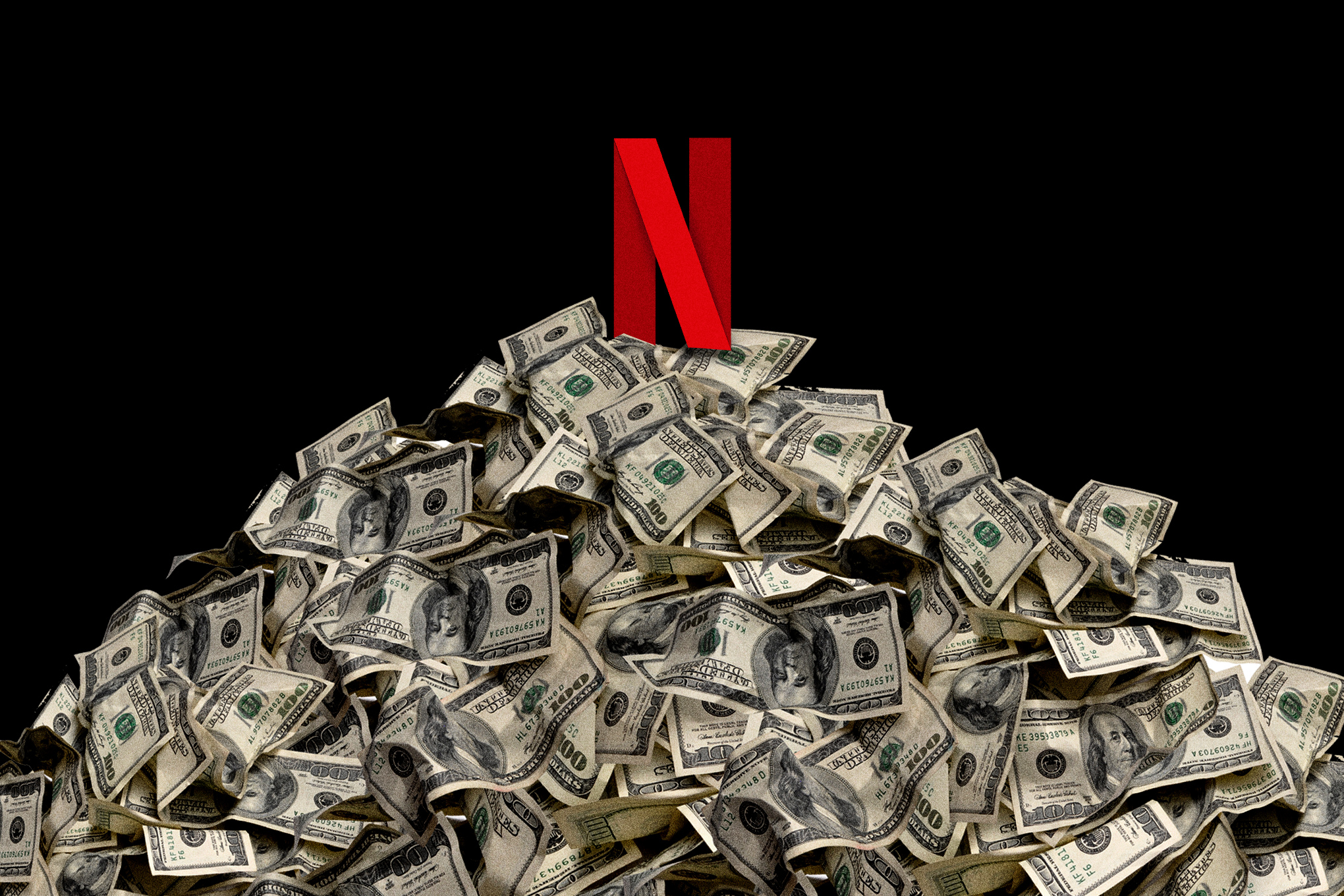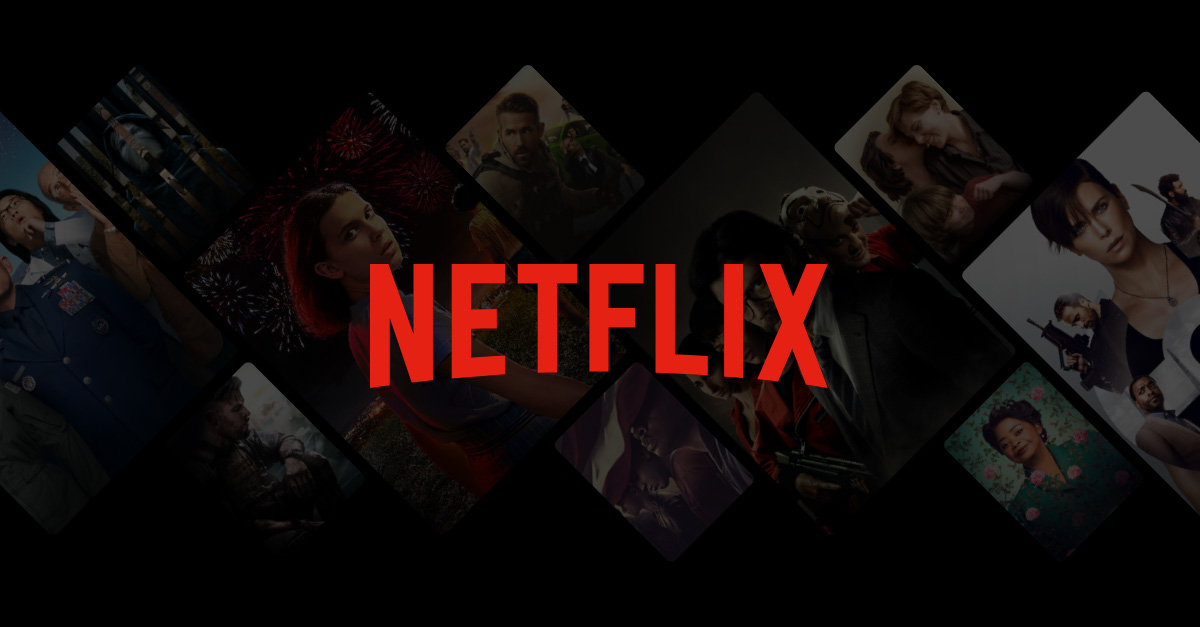Introduction
Netflix, the popular streaming service that has revolutionized the way we consume entertainment, has become a household name across the globe. With a vast library of movies, TV shows, and original content, Netflix has quickly established itself as a dominant force in the entertainment industry.
But how did Netflix rise to such prominence? What factors have contributed to its success? And most importantly, how much is Netflix worth?
In this article, we will delve into the fascinating journey of Netflix, from its humble beginnings as a DVD-by-mail rental service to its status as a multi-billion dollar streaming giant.
Founded in 1997 by Reed Hastings and Marc Randolph, Netflix started as a subscription-based DVD rental service. Customers would browse and order DVDs online, and the company would mail them to their doorstep. This innovative model disrupted the traditional video rental market dominated by brick-and-mortar stores.
Netflix’s early success was fueled by its user-friendly platform, expansive selection of titles, and competitive pricing. As more and more customers embraced the convenience of home movie delivery, the company quickly gained traction and expanded its customer base.
Recognizing the evolving landscape of the entertainment industry, Netflix made a visionary decision to embrace streaming technology. In 2007, they introduced a streaming service that allowed subscribers to instantly watch movies and TV shows online.
This move proved to be a game-changer, as it eliminated the need for physical DVDs and opened up a world of unlimited entertainment options at the click of a button. As the demand for streaming content skyrocketed, Netflix capitalized on this trend and gradually shifted its focus from DVDs to streaming.
With the advent of high-speed internet and the proliferation of smart devices, Netflix’s streaming service became increasingly accessible to a wider audience. The company invested heavily in developing a robust streaming infrastructure and forging partnerships with content creators, thus solidifying its position as a leader in the streaming industry.
As of today, Netflix boasts an impressive library of thousands of TV shows, movies, documentaries, and stand-up specials from various genres and languages, catering to the diverse preferences of its global subscriber base.
Now that we have established the background of Netflix’s rise to prominence and its transition into the streaming realm, let’s delve deeper into its expansion, growth, and its impact on the entertainment industry.
The Early Years of Netflix
In the late 1990s, when the internet was still in its infancy, Reed Hastings and Marc Randolph had a vision to disrupt the traditional video rental market with a revolutionary business model. They launched Netflix in 1997, initially as a DVD-by-mail rental service.
Their innovative approach allowed customers to browse and select movies online, which were then mailed to their doorstep. This eliminated the need for customers to visit physical video rental stores and provided the convenience of home movie delivery. The concept instantly resonated with consumers.
Netflix quickly gained popularity, thanks to its user-friendly website, wide selection of movies, and affordable subscription plans. The company strategically positioned itself as a more convenient alternative to traditional video rental stores like Blockbuster.
However, Netflix faced challenges in its early years. With limited resources, the company struggled to compete with established players in the market. Their online rental model required a constant supply of DVDs and efficient shipping processes, which put pressure on their operations.
Despite these challenges, Netflix persevered and continuously innovated. In 1999, they introduced a subscription-based model that allowed customers to rent an unlimited number of DVDs for a fixed monthly fee. This transformative shift helped them solidify their position and further differentiate themselves from their competitors.
Over time, Netflix began to leverage the power of data and personalization. The company introduced a recommendation algorithm that analyzed customer preferences and viewing history to suggest movies and shows tailored to individual tastes. This groundbreaking feature further enhanced the user experience and contributed to customer satisfaction.
In 2002, Netflix made its initial public offering (IPO), paving the way for further growth and expansion. The IPO provided the necessary funds to invest in technological advancements and expand their customer base.
As the popularity of DVD rentals soared, Netflix recognized the potential of streaming technology. In 2007, they unveiled the now-iconic “Watch Now” feature, which allowed subscribers to instantly stream a selection of movies and TV shows directly on their computers.
This foray into streaming marked a major turning point for Netflix, as they gradually shifted their focus from DVDs to online streaming. The company invested heavily in building a robust streaming infrastructure and securing licensing agreements with content providers.
By embracing streaming technology, Netflix positioned itself at the forefront of the digital revolution in the entertainment industry. They anticipated the changing preferences of consumers and took bold steps to meet their evolving needs.
With its successful transition into streaming, Netflix continued to disrupt the industry and redefine the way people consume entertainment. The early years of Netflix laid the foundation for its future success and set the stage for its remarkable journey as a streaming giant.
Expansion and Growth
After establishing itself as a pioneering force in the DVD rental market, Netflix set its sights on expansion and growth. The company saw immense potential in tapping into new markets and reaching a wider audience.
In 2010, Netflix expanded its services beyond the United States, launching its streaming platform in Canada. This marked the beginning of its international expansion, as the company sought to capitalize on the growing demand for streaming content around the world.
Over the following years, Netflix expanded rapidly, entering new markets in Europe, Asia, and Latin America. This global expansion allowed them to tap into a vast international audience and establish a strong presence in multiple regions.
To cater to the diverse preferences of viewers worldwide, Netflix invested heavily in producing and licensing content from different countries and cultures. They recognized the importance of offering localized content to resonate with audiences in each region.
Simultaneously, Netflix continued to focus on strengthening its original content offerings. In 2013, they made a groundbreaking move by releasing their first original series, “House of Cards,” which garnered critical acclaim and set a new benchmark for streaming platforms.
The success of “House of Cards” paved the way for a wave of original programming from Netflix. Series like “Stranger Things,” “Narcos,” and “The Crown” became global phenomena, attracting a large and dedicated fan base.
The growth of Netflix’s original content library was not limited to TV shows. The company also ventured into film production, releasing notable movies such as “Roma” and “The Irishman,” which received widespread acclaim and earned prestigious awards.
This strategic focus on original content not only attracted subscribers but also differentiated Netflix from its competitors. By directly producing and owning their content, they were able to offer unique and exclusive experiences to viewers.
As Netflix continued to expand, it faced challenges from both traditional media companies and emerging streaming services. Competition in the streaming space intensified, with platforms like Amazon Prime Video, Hulu, and Disney+ vying for a share of the market.
Nevertheless, Netflix remained resilient and adaptive. They continuously invested in innovation and technology, improving their streaming platform and user experience. They also forged partnerships with content creators and established distribution deals with major studios, securing a steady stream of high-quality content.
All these efforts propelled Netflix’s growth trajectory. By the end of 2020, the company boasted over 200 million paid subscribers worldwide, solidifying its position as the leading streaming service globally.
Netflix’s expansion and growth continue to be driven by its commitment to delivering compelling content, investing in technology, and expanding its international presence. The next section will explore how the rise of streaming services further contributed to Netflix’s dominance in the entertainment industry.
Breaking New Grounds with Original Content
One of the key factors that set Netflix apart from its competitors is its groundbreaking approach to original content. Recognizing the power of exclusive and high-quality programming, Netflix made bold moves to produce and release its own original series, films, and documentaries.
In 2013, Netflix made a significant splash in the industry with the release of its first original series, “House of Cards.” This political drama, featuring Kevin Spacey and Robin Wright, received critical acclaim and immediately positioned Netflix as a serious contender in the world of television.
“House of Cards” was just the beginning. Netflix went on to produce a string of successful original series, each pushing the boundaries of storytelling and captivating audiences worldwide. Shows like “Stranger Things,” “Narcos,” “The Crown,” and “Ozark” garnered widespread praise and amassed a dedicated following.
In addition to TV shows, Netflix also broke new grounds in the film industry. The company ventured into producing and acquiring original films, showcasing a diverse range of genres, from powerful dramas to quirky comedies and thought-provoking documentaries.
Notable original films from Netflix include “Roma,” directed by Alfonso Cuarón, which received critical acclaim and won multiple awards, including three Oscars. Another groundbreaking film was “The Irishman,” directed by Martin Scorsese, featuring an all-star cast and earning widespread praise for its cinematic excellence.
This commitment to original content not only allowed Netflix to offer something unique and exclusive to its subscribers but also gave the company creative freedom and control over their programming. They were able to take risks and bring innovative narratives to life, captivating audiences and initiating important conversations.
Furthermore, Netflix actively embraced diversity and representation in their original content, showcasing stories from different cultures, backgrounds, and perspectives. This commitment to inclusivity resonated with audiences, who appreciated seeing their own experiences reflected on screen.
The success of Netflix’s original content strategy was evident in the industry recognition it received. The streaming giant consistently earned nominations and wins at prestigious awards ceremonies, including the Emmys, Golden Globes, and Academy Awards.
Netflix’s investment in original content has not only elevated its brand reputation but also contributed to its subscriber growth. Exclusivity and high-quality programming act as powerful incentives for viewers to choose Netflix over other streaming platforms.
Other streaming services have followed in Netflix’s footsteps, recognizing the value of original content. However, Netflix’s early mover advantage and continued commitment to storytelling have solidified its position as a leader and trendsetter in the world of online entertainment.
Going forward, the success of their original content strategy will likely remain a key driver of Netflix’s dominance in the industry, as they continue to produce innovative and captivating programming to delight audiences around the world.
The Rise of Streaming Services
The advent of streaming services has completely transformed the way we consume entertainment. With the rise of high-speed internet and advancements in technology, consumers no longer rely solely on traditional TV channels or DVD rentals. Instead, they turn to streaming services for on-demand access to a vast library of movies, TV shows, and original content.
The shift towards streaming was fueled by several factors. Firstly, the convenience factor played a significant role. With streaming services, viewers have the freedom to watch their favorite shows and movies at any time, from any device with an internet connection. This flexibility revolutionized the way people consumed content, enabling binge-watching and personalized viewing experiences.
Moreover, streaming services offered a wide range of choices and catered to diverse consumer preferences. Unlike traditional TV channels that followed a scheduled programming format, streaming platforms allowed viewers to explore a diverse catalog of content and choose what they wanted to watch. This personalized approach appealed to a generation accustomed to having control over their entertainment choices.
The rise of streaming services also marked a departure from the traditional ad-supported model. While traditional TV relied on advertising revenue, streaming platforms offered ad-free viewing experiences in exchange for subscription fees. This shift not only provided a better viewing experience but also gave streaming services the financial resources to invest in high-quality original content.
Netflix was at the forefront of this streaming revolution. By transitioning from a DVD rental service to a streaming platform, they tapped into the growing demand for instant access to entertainment. Netflix’s success acted as a catalyst for other companies to enter the streaming market.
Competitors like Amazon Prime Video, Hulu, and Disney+ followed suit, each bringing their unique offerings to the table. With more players entering the market, viewers were presented with a plethora of choices, each with its own exclusive content and perks.
The rise of streaming services also had a significant impact on the traditional media landscape. As viewers migrated towards streaming platforms, traditional TV channels faced declining viewership and ad revenue. This forced traditional broadcasters to adapt and explore their own streaming options to stay relevant in the digital age.
Streaming services also opened doors for new content creators and independent filmmakers. With platforms like Netflix investing heavily in original programming, there was a surge in opportunities for talented individuals and fresh storytelling. The democratization of content creation allowed unique voices and stories to reach a global audience.
The rise of streaming services has reshaped the entertainment industry, pushing boundaries and redefining the way we consume content. With constant advancements in technology, streaming services are poised to continue evolving, offering even more immersive and interactive viewing experiences in the future.
Next, we will delve into Netflix’s dominance in the streaming industry and its impact on the entertainment landscape.
Netflix’s Dominance in the Industry
When it comes to streaming services, Netflix stands out as a dominant force in the industry. Its innovative approach, extensive content library, and global reach have solidified its position at the top.
One of the key factors behind Netflix’s dominance is its early entry into the streaming market. By recognizing the potential of streaming technology and shifting its focus from DVDs to online streaming, Netflix gained a significant advantage over its competitors.
The company’s commitment to providing a seamless and user-friendly streaming experience has resonated with viewers around the world. Netflix’s intuitive interface, personalized recommendations, and reliable streaming infrastructure have set the standard for the industry.
In addition to its exceptional user experience, Netflix’s extensive content library has played a crucial role in its dominance. The platform offers a vast selection of movies, TV shows, documentaries, and original programming in various genres and languages. This extensive collection caters to the diverse tastes and preferences of its global subscriber base.
Furthermore, Netflix’s strategic investments in original content have elevated its status and attracted a loyal following. The company has been successful in producing high-quality, critically acclaimed series and films that captivate audiences and generate buzz. This commitment to original content has given Netflix a unique edge over its competitors, as viewers seek out exclusive and unique experiences.
Netflix’s global reach and international expansion have also contributed to its dominance. The company has made significant investments in localized content, recognizing the importance of tailoring its offerings to different markets. By catering to diverse cultures and languages, Netflix has successfully captured a global audience and established itself as a household name in many countries.
Another key aspect of Netflix’s dominance is its ability to adapt and innovate. The company has consistently stayed ahead of the curve, embracing emerging technologies and exploring new avenues for growth. For example, Netflix was quick to recognize the potential of mobile viewing and introduced offline downloads, allowing subscribers to enjoy content on the go.
Furthermore, Netflix’s data-driven approach and deep understanding of its audience have been instrumental in its success. By leveraging the wealth of user data at its disposal, Netflix can make informed decisions about content acquisition, production, and recommendations. This data-driven approach enables them to continuously refine their offerings and enhance the user experience.
The strong brand recognition and positive word-of-mouth generated by its satisfied customer base have further contributed to Netflix’s dominance. It has become the go-to streaming service for millions of viewers worldwide, becoming synonymous with quality content and convenience.
In summary, Netflix’s dominance in the industry can be attributed to various factors, including its early entry into streaming, exceptional user experience, extensive content library, strategic investments in original programming, global reach, adaptability, and data-driven decision-making. With its continuous innovation and commitment to customer satisfaction, Netflix looks set to maintain its status as the leading streaming service in the foreseeable future.
Financial Breakdown: Netflix’s Revenue and Profit
Netflix’s dominance in the streaming market is not only reflected in its user base and content offerings but also in its impressive financial performance. The company has experienced tremendous growth over the years, generating substantial revenue and profit.
One of the key drivers of Netflix’s financial success is its recurring revenue model. Unlike traditional TV networks that rely on advertising revenue, Netflix primarily generates revenue through its subscription-based model. Subscribers pay a monthly fee in exchange for unlimited access to its content library.
In recent years, Netflix’s revenue has experienced consistent growth. The company’s total revenue in 2020 reached $25 billion, representing a significant increase from previous years. This growth can be attributed to the expanding subscriber base and price increases in some markets.
As of December 2020, Netflix had over 200 million paid subscribers worldwide. This substantial subscriber base provides a stable source of revenue for the company.
In terms of profit, Netflix has demonstrated consistent profitability. However, it is important to note that the company’s profit margins have been relatively modest compared to its revenue. This is due to the substantial investment Netflix makes in content production, marketing, and technology.
Netflix’s approach to content production is one of its defining characteristics. The company invests heavily in original programming, which entails significant upfront costs. Producing high-quality series and films requires substantial financial resources, but it also serves as a differentiating factor for Netflix, attracting subscribers and building brand loyalty over time.
Additionally, Netflix’s marketing efforts play a crucial role in driving subscription growth. The company allocates a considerable portion of its revenue to marketing initiatives, aiming to reach new audiences and retain existing subscribers. These investments contribute to the company’s overall operating costs.
Furthermore, Netflix’s ongoing focus on technology and infrastructure development adds to its expenses. The company continuously invests in improving its streaming quality, user experience, and personalized recommendations. These investments ensure that Netflix stays ahead in the competitive streaming landscape.
Although the costs associated with content production, marketing, and technology are significant, they have proven to be strategic investments for Netflix, fueling its growth and maintaining its competitive edge.
Looking ahead, Netflix’s financial outlook remains positive. The company is projected to continue generating strong revenue and profit, driven by its expanding subscriber base, increased international presence, and continued investment in content creation and technology.
In summary, Netflix has experienced remarkable financial success, fueled by its subscription-based revenue model, expanding subscriber base, and strategic investments in content production, marketing, and technology. While profitability may be modest in terms of profit margins due to substantial content investments, Netflix’s financial performance highlights its position as a leading player in the streaming industry.
Netflix’s Stock Market Performance
Netflix’s success in the streaming industry has had a profound impact on its stock market performance. The company’s stock, traded under the ticker symbol NFLX, has experienced significant growth and volatility over the years.
Since its initial public offering (IPO) in 2002, Netflix’s stock price has soared, reflecting investors’ confidence in the company’s growth potential. The stock’s performance has been characterized by both periods of rapid appreciation and occasional downturns.
Netflix’s stock market performance is closely tied to its subscriber growth and financial results. Positive news, such as surpassing subscriber expectations or releasing successful original content, tends to drive the stock price upward. Conversely, negative news or concerns about competition can result in temporary declines.
One notable milestone in Netflix’s stock market journey occurred in 2013 when the stock crossed the $300 mark for the first time. This exponential growth continued, and in 2018, Netflix became a member of the prestigious “FAANG” group of technology stocks (Facebook, Apple, Amazon, Netflix, and Google).
As of [current date], Netflix is one of the most valuable media companies in the world. Its market capitalization has reached [current market cap], reflecting the market’s confidence in the company’s long-term prospects.
However, it’s important to note that investing in Netflix stock has not been without its challenges. The stock has experienced periods of high volatility, often influenced by factors such as competition, changing market conditions, or shifts in investor sentiment regarding the streaming industry as a whole.
Another aspect that affects Netflix’s stock performance is its ability to manage costs and generate profits. Investors closely monitor the company’s financial results, particularly revenue growth, profit margins, and the company’s ability to effectively invest in content production and expansion.
Netflix’s stock performance is also influenced by broader trends in the stock market, as well as industry-specific factors. The streaming industry is highly competitive, with new players entering the market regularly. Investors evaluate Netflix’s ability to stay ahead of the competition and maintain its position as a market leader.
Looking ahead, Netflix’s stock market performance will likely be influenced by factors such as subscriber growth, international expansion, content offerings, and the company’s ability to navigate the evolving streaming landscape. As the company continues to innovate and adapt to changing consumer trends, its stock performance will undoubtedly attract attention from investors and analysts alike.
In summary, Netflix’s stock market performance has been characterized by significant growth and volatility, reflecting the market’s confidence in the company’s position as a dominant player in the streaming industry. While the stock has experienced periods of high volatility, positive financial results and strategic investments have contributed to its long-term upward trajectory.
The Future of Netflix: Challenges and Opportunities
As Netflix continues to solidify its position as a global streaming giant, it faces both challenges and opportunities that will shape its future trajectory.
One of the biggest challenges for Netflix is the increasingly crowded streaming market. With the emergence of new competitors like Disney+, HBO Max, and Amazon Prime Video, the market has become fiercely competitive. Netflix must continue to differentiate itself and deliver compelling content to retain and attract subscribers.
Moreover, as more traditional media companies enter the streaming space, there is a risk of content fragmentation. Major studios and production houses are launching their own streaming platforms, potentially pulling their content from Netflix’s library. This could pose a challenge for Netflix in terms of maintaining a diverse and comprehensive content library.
Another challenge that Netflix faces is the rise of piracy and unauthorized streaming. With the ever-increasing availability of pirated content and illegal streaming platforms, Netflix must find ways to combat piracy and protect its valuable content. Developing robust anti-piracy measures and offering competitive pricing and accessibility could help mitigate these challenges.
Furthermore, international expansion presents both challenges and opportunities for Netflix. While the company has achieved significant growth in international markets, it still faces cultural, regulatory, and distribution challenges in certain regions. Adapting content to local tastes and preferences, navigating licensing agreements, and managing localized operations will be crucial for Netflix’s continued success globally.
Despite these challenges, Netflix also has numerous opportunities to further expand and innovate. The company can continue to invest in original content, strengthening its position as a provider of high-quality and exclusive programming. By nurturing relationships with top creative talent and continuously pushing boundaries, Netflix can attract and retain subscribers who value unique and immersive entertainment experiences.
Technological advancements offer another promising opportunity for Netflix. As streaming technologies evolve, there is immense potential for innovations in areas such as augmented reality (AR), virtual reality (VR), and interactive storytelling. By capitalizing on these emerging technologies, Netflix can further enhance the viewer’s engagement and create exciting new forms of entertainment.
Market diversification is also an opportunity for Netflix. While the company is primarily known for streaming TV shows and movies, it can consider expanding into other content verticals such as live sports, news, or even e-sports. By broadening its content offerings, Netflix can attract new audiences and increase its competitive advantage.
Furthermore, international expansion remains a major opportunity for Netflix. As digital infrastructure improves in developing markets, there is a vast untapped audience hungry for quality content. By tailoring its offerings to local cultures and investing in localized operations, Netflix can capture a larger share of the global streaming market.
In summary, Netflix faces challenges in an increasingly competitive streaming landscape, including content fragmentation, piracy, and international expansion. However, the company also has exciting opportunities to differentiate itself through original content, leverage emerging technologies, diversify its offerings, and expand its global reach. By navigating these challenges and capitalizing on opportunities, Netflix can continue to shape the future of entertainment and maintain its position as a leader in the streaming industry.
Conclusion
Netflix’s journey from a DVD-by-mail rental service to a global streaming giant has been nothing short of remarkable. Through its innovative approach, extensive content library, and commitment to original programming, Netflix has become a dominant force in the entertainment industry.
The early years of Netflix were marked by disruptive ideas and a customer-centric approach. By recognizing the potential of streaming technology and adapting to changing consumer preferences, Netflix disrupted the traditional video rental market and paved the way for the streaming revolution.
In the face of evolving competition and challenges, Netflix has continuously reinvented itself. The company’s emphasis on original content has set it apart, captivating audiences with groundbreaking series and films that have redefined the landscape of the streaming industry.
Financially, Netflix has experienced substantial growth, driven by its recurring revenue model and strategic investments in content production and international expansion. The company’s stock market performance reflects investors’ confidence in its long-term prospects.
Looking ahead, Netflix faces both challenges and opportunities. The crowded streaming market, content fragmentation, and piracy pose significant challenges. However, the company has opportunities to differentiate itself through original content, leverage emerging technologies, and expand into new markets.
As Netflix continues to innovate and adapt, it is reshaping the future of entertainment. With its global reach, diverse content library, and commitment to providing a seamless streaming experience, Netflix is well-positioned to maintain its dominance and captivate audiences worldwide.
Whether it’s revolutionizing the way we binge-watch our favorite series or challenging the traditional media landscape, Netflix remains at the forefront of the streaming revolution, providing endless hours of entertainment and shaping the future of digital content consumption.

























